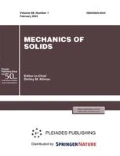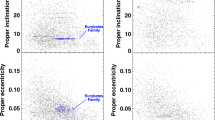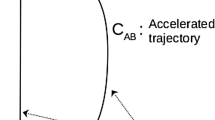Abstract
The evolution of the planetary orbits of the Solar System is studied as part of a planetary problem. The displacement of the orbital elements is found by the numerical integration of the equations of perturbed motion written in non-degenerate variables. The results are presented as tables for the average displacements of the orbital elements and their oscillatory components for the epoch J2000, as well as graphs of the behavior of the orbital elements as functions of time.

Similar content being viewed by others
REFERENCES
U. Le Verrier, “Théorie de mouvement de Mercure,” Ann. Observ. Imp. 5, 1–96 (1859).
U. Le Verrier, “Lettre de M. Le Verrier a M. Faye sur la théorie de Mercure et sur le mouvement du périhélie de cette planète,” C. R. Hebd. Seances Acad. Sci. 49, 379–383 (1859).
S. Newcomb, The Elements of the Four Inner Planets and the Fundamental Constants of Astronomy. Supplement to the American Ephemeria and Nautical Almanac for 1897 (Palala Press, 2016).
N. T. Roseveare, Mercury’s Perihelion from Le Verrier to Einstein (Oxford Univ. Press, Oxford, 1982).
A. Einshtein, Sitzungsber (Preuss. Akad. Wiss., Berlin, 1915), pp. 778, 799, 831, 844.
E. M. Standish, X. X. Newhall, J. G. Williams, and W. M. Folkner, “JPL planetary and Lunar ephemerides, DE403/LE403,” Interoffice Memo. 314, 10–127, 1–22 (1995).
E. V. Pitjeva, Modern Numerical Theories of the Movement of the Sun, Moon and Large Planets (Inst. Appl. Astron. RAS, St. Petersburg, 2003) [in Russian].
N. I. Amel’kin, “Precession of the orbit of Mercury,” Dokl. Phys. 64 (12), 470–475 (2019).
G. N. Duboshin, Celestial Mechanics. Basic Problems and Methods (Fizmatgiz, Moscow, 1963) [in Russian].
G. N. Duboshin, Reference Manual on Celestial Mechanics and Astrodynamics (Nauka, Moscow, 1976) [in Russian].
J. L. Simon, P. Bretagnon, J. Chapront, M. Chapront-Touze, G. Francon, and J. Laskar, “Numerical expressions for precession formulae and mean elements for the Moon and the planets,” Astron. Astrophys. 282, 663–683 (1994).
Author information
Authors and Affiliations
Corresponding author
Additional information
Translated by M. Chubarova
About this article
Cite this article
Amel’kin, N.I. Calculations of the Evolution of Planetary Orbits. Mech. Solids 55, 1194–1209 (2020). https://doi.org/10.3103/S0025654420080038
Received:
Revised:
Accepted:
Published:
Issue Date:
DOI: https://doi.org/10.3103/S0025654420080038




